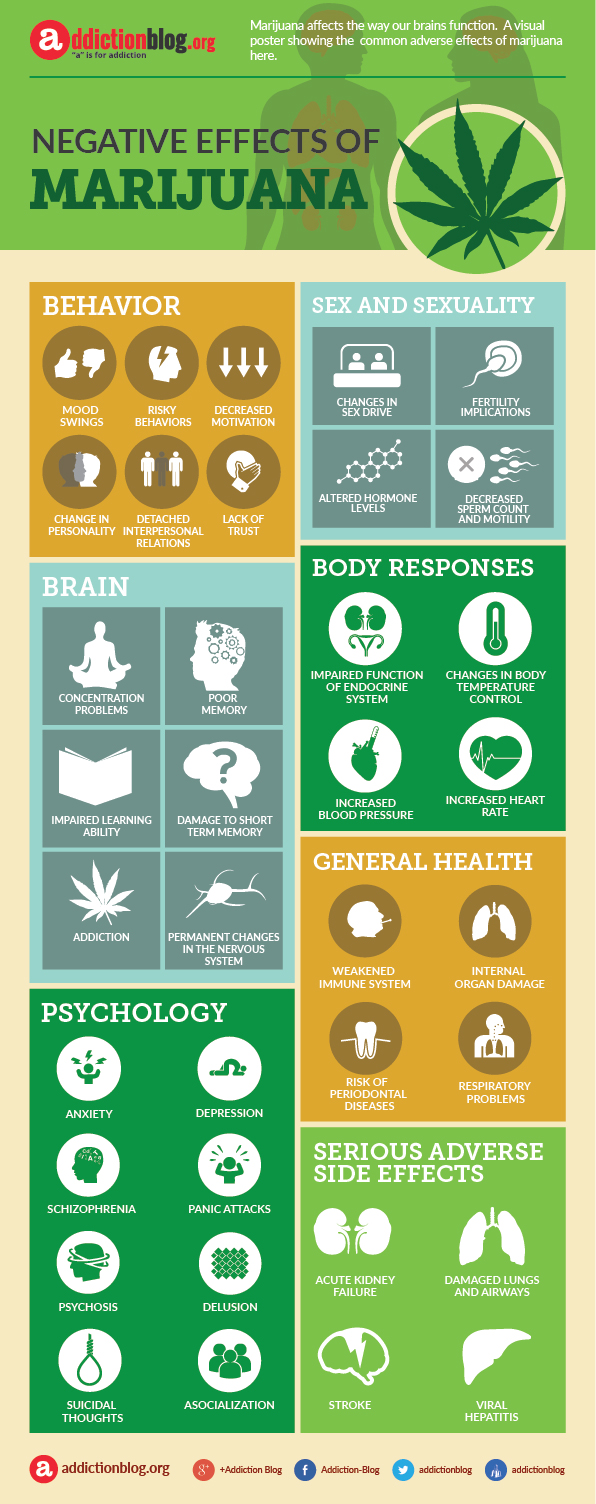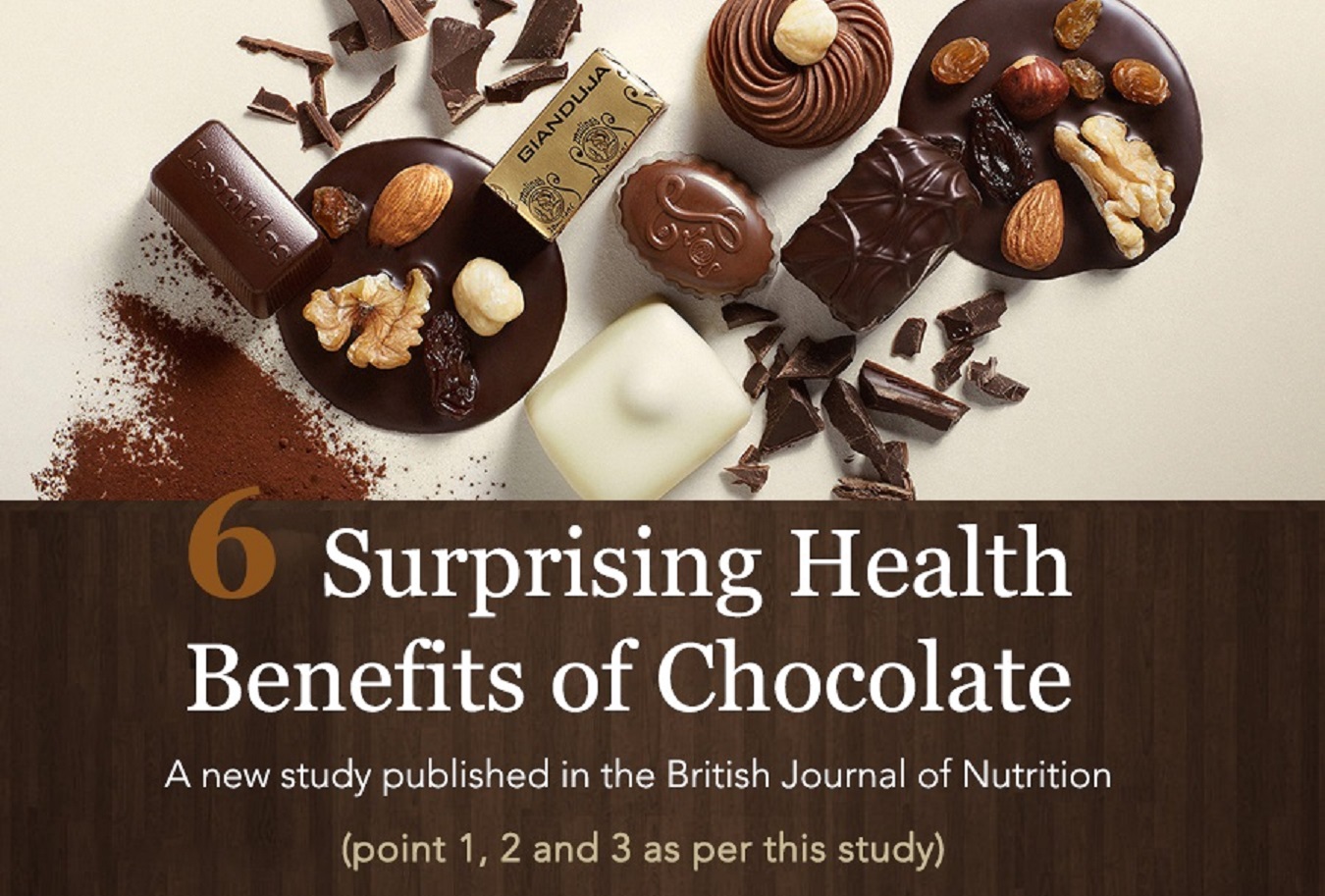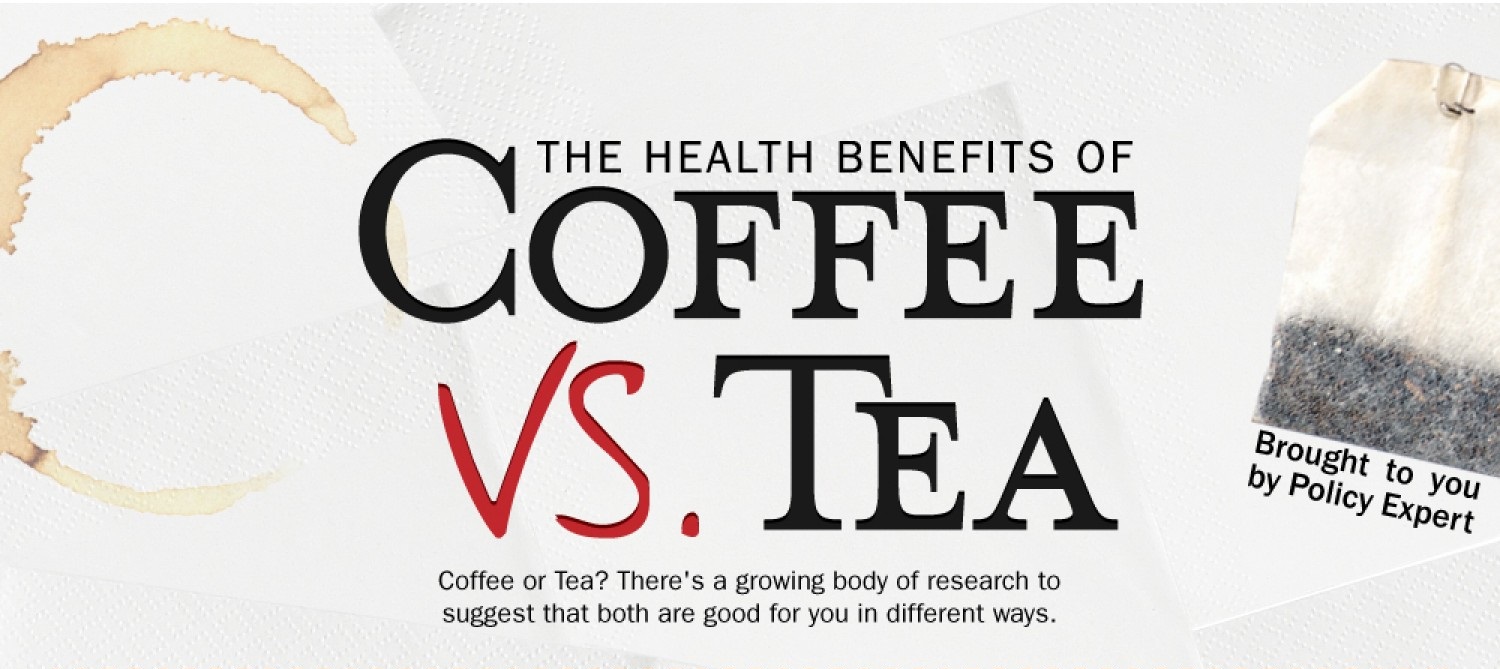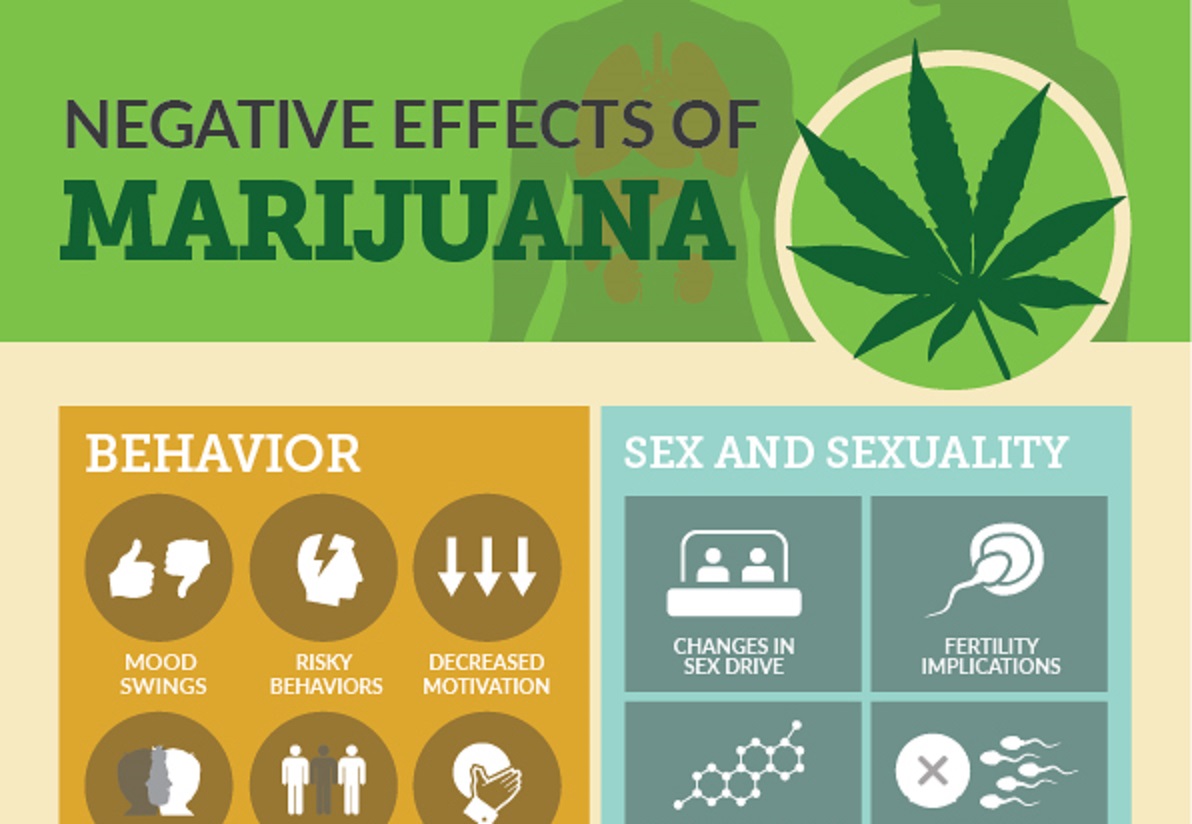Chocolate is favorite of many of us but very few of us are aware of the amazing health benefits that are associated with eating chocolate. There are a plenty of benefits of eating chocolate in a small amount. Daily consumption of chocolate in small amount can lower the risks of diabetes and reduction in heart diseases. Not only this but apart from this eating chocolate make one physically more active. There is much more to explore in the infographic below created by the team at I Got Crazy a place for cool stuff online. So, have a look at the infographic below and share your views with us.
The health benefits of Coffee vs Tea [Infographic]

White tea has been found to have a higher concentration of antioxidants in it which may actually be more effective preventing some diseases than green tea.
Green tea has thermogenic properties and promotes fat oxidation beyond that explained by its caffeine content.
White tea may help prevent obesity. White tea was found to inhibit the growth of new fat cells.
Studies have shown that Green Tea reduces the risk of esophageal cancer in women by 60%.
People who drink more coffee have been found to be less likely to suffer Alzheimers disease late in life.
Drinking coffee over a long period of time may reduce the risk of dying from heart disease.
Tea may help prevent the development of type 1 diabetes and slow the progression once it has developed.
Drinking 3 to 4 cups of tea a day can cut the chance of a heart attack.
Tea contains fluoride which protects teeth.
Men who drink more than 10 cups of green tea per day are less likely to develop disorders of the liver.
Tea can protect against heart disease and some cancers
People who drink black tea 4 time a day for 6 weeks were found to have lower levels of stress hormone cortisol.
Green tea may offer some protection against lung cancer according to studies.
Tea hydrates rather than the common conception that to caffeine in it dehydrates.
Studies have shown that coffee helps prevent type 2 diabetes.
Drinking coffee has been shown to decrease the risk of developingg Gout in men over 40.
Caffeine increases the effectiveness of pain killers and coffee contains caffeine.
Coffee protects the liver, especially against cirrhosis and liver cancer.
Coffee improves short term recall as well as improved reaction times. The largest improvement was seen in the elderly.
The negative effects of Marijuana [infographic]

Brain Health And Marijuana Abuse
Your mental health changes when you smoke weed regularly. In fact, marijuana can both impair and change the way that the brain works. THC quickly passes the blood-brain barrier and acts on the same pleasure centers in the brain that are targeted by heroin, cocaine, and alcohol too. After the substance reaches the brain, it influences our mood, sensory perception, appetite, time perception, behavior, and personality. When the brain is repeatedly affected by THC, people can experience long-term:
- decreased coordination abilities
- depression
- feelings of fear or paranoia
- lowered interest in completing tasks
- memory impairments
- trouble concentrating
- worsened anxiety and panic attacks
Physical And Organ Changes Caused By Weed
Marijuana users that have other underlying physical health problems, such as liver disease, low blood pressure, diabetes, heart conditions, or respiratory tact problems, should be extremely cautious of the risks frequent use can bring. Some of the more common and concerning negative side effects of weed follow.
Respiratory problems – Since marijuana smoke irritates the lungs, every day and long-term users can experience coughs, frequent lung illness, and have an increased risk of lung infections. Indications that marijuana smoke can increase the risk of lung cancer have not yet been confirmed by scientists, but are possible (especially since marijuana can be sprayed with chemicals).
Increased heart rate – Marijuana has the potency to keep your heart rate increased for up to 3 hours after smoking, or after the initial effects are felt. Risks of heart problems and even heart attack are higher in the elderly and individuals with pre-existing heart issues.
Sexuality and fertility changes – By changing people’s hormone levels, marijuana can influence the drive and ability for sexual activities. But more importantly, it can take its toll on fertility in both men and women. If smoked during pregnancy, weed can affect certain parts of the baby’s developing brain and result in brain and behavioral problems in a child’s life later on. Children whose mothers smoked weed frequently during pregnancy may experience:
- attention difficulties
- memory problems
- problem-solving issues
Do you have anything to add to this topic, drop us a comment below.
source: addictionblog.org
Google Now 50 Command Examples
 Google Now, The right information at just the right time. From knowing the weather before you start your day, to planning the best route to avoid traffic, or even checking your favorite team’s score while they’re playing, Google Now brings you the information you want, when you need it. Google now assists you in almost every part of your life, specially with the voice command search.
Google Now, The right information at just the right time. From knowing the weather before you start your day, to planning the best route to avoid traffic, or even checking your favorite team’s score while they’re playing, Google Now brings you the information you want, when you need it. Google now assists you in almost every part of your life, specially with the voice command search.
David from Phonebuff compiles a list of 50 commands that can be asked to Google now with their explanation Continue reading “Google Now 50 Command Examples”
Milk Matters [Infographic]

An infographic by the team at Online Masters In Public Health
Top Milk Producing Countries as of 2012:
1. India: 121 million metric tons
2. U.S: 89 million MT
3. China: 31.8 million MT
4. Russia: 31.2 million MT
5. Brazil: 30.1 million MT
Not surprisingly, a list of top domestic consumption equals exactly the list of producing countries. One other thing… the European Union, taken as a group, would actually be #1, producing and consuming 140.4 million metric tons of milk.
A brief history of milk
10,000-6,000 years ago: Neolithic farmers in Britain and Northern Europe begin milking cattle for human consumption.
1700 – 63 B.C. The Old Testament refers to a ‘land which floweth with milk and honey’ some twenty times. In all, the Bible contains some fifty references to milk and milk products.”
460-370 B.C.: Hippocrates used raw milk to heal patients from disease.
1800s: Cheap, swill milk was produced in the 1800s in order to increase profits. These milk producing cows were fed distillery waste instead of their normal diet of green pasture. 50 percent of those who drank this milk died.
1864: Pasteur develops a process now called Pasteurization
1884: the first milk bottles appear.
1899: Auguste Gaulin, a Frenchman changes the physical and chemical properties of milk. Gaulin’s inventged an emulsifying or ‘homogenizing’ machine, that broke milk’s fat globules into a smaller, more uniform size that resisted separation and rising.
1987: the FDA mandated pasteurization of all milk and milk products for human consumption
1990: The use of genetically modified milk is approved
2008: FDA approves “cloned” milk
Factoid: FDA experts measured vitamins A, C, B1, B2, B6 and B12 as well as niacin, pantothenic
acid, calcium, iron, phosphorous, zinc, fatty acids, cholesterol, fat, protein, amino acids and lactose in milk from 600 cloned animals, including cattle. Levels all looked normal.
10 awesome Things Made from Milk:
cheese, yogurt, cream, butter, ice cream, pudding, cream cheese, Gelato, sour cream, chocolate
Top 10 reasons to drink raw milk
More nutritious than pasteurized milk
Contains enzymes (pasteurized milk doesn’t)
Contains probiotics, is rich in beneficial bacteria
Easier to digest
Factoid: 29 million Americans are lactose intolerant; 85 percent of those with lactose intolerance can tolerate raw milk.
Butterfat is a great source of easily absorbed vitamin A. It also contains the fat-soluble vitamins D, E and K2.
Raw butterfat is rich in conjugated Linoleic acid, helps fight cancer
Is not homogenized
Raw milk clabbers when left out; pasteurized milk goes sour
Helps fight asthma and allergies
Here are some other reasons why full fat dairy foods are good for you;
Butterfat is a source of trace minerals, including manganese, chromium, zinc, copper, selenium, and iodine.
Milk, cheese (and meat) from grass fed cattle is a good source of omega 3 fats.
When dairy products come from grass fed cows they contains high levels of conjugated linoleic acid (CLA) — besides fighting cancer, it is a compound that helps your body build muscle rather than store fat, amongst other things.
When you eat fat as part of your meals and snacks it helps to slow down absorption, and this means you feel fuller for longer.
Palmitoleic acid, occurs naturally in full fat dairy products and meat, and it is protective against insulin resistance and diabetes.
The argument against Raw Milk boils down to one thing:
It can harbor dangerous microorganisms that can pose serious health risks such as Salmonella, E. coli, and Listeria.
BUT just how “dangerous” is raw milk by comparison?
Produce is responsible for the greatest number of illnesses each year (2,062),
Poultry is #2: 1,112.
Dairy products are at the bottom of the list. They cause the fewest outbreaks and illnesses of all the major food categories – beef, eggs, poultry, produce and seafood.
From 1990 − 2006, there were 24,000 foodborne illnesses reported each year on average. Of those, 315 per year are from dairy products. Or about 1.3% of foodborne illnesses each year.
8: Number of states that allow raw milk to be sold in stores for human consumption — Arizona, California, Connecticut, Maine, Pennsylvania, South Carolina, New Mexico and Washington. In others, like Florida, the milk has to be marked as pet food.
The Billion Dollar Business of Milk
4 companies dominate the milk industry: Land O Lakes, Foremost, Dean Foods (largest dairy producer), Dairy Farms of America
89 million tons: annual production of milk in America or $27 billion in sales.
65,000 – 81,000: number of U.S. dairies, yet corporate consolidation means that about half of the milk sold comes from just under 4 percent of the farms.
Factoid: Between 1950 and 2012, the number of dairy cows in the United States fell by more than half, yet during that same period, the average annual milk yield more than tripled. How can that be?
CAFOs: Most dairy cows are raised in concentrated animal feeding operations (CAFOs); about 10 percent of those are considered large CAFOs, each with more than 700 dairy cattle. At CAFOs, cows are:
artificially inseminated
Fed high protein food instead of grass
Given genetically engineered growth hormone rBGH (recombinant bovine growth hormone to increase production of milk per cow.
What You Need to Know about GM milk:
GM since: 1994: date when milk first was genetically modified
How widespread is GM milk: 17 percent of US cows were injected with rBGH in 2007 (most recent figure). Milk from rBGH-treated cows contains elevated levels of Insulin Growth Factor-1, a hormone linked to increased risks for certain cancers.
What to watch for: Tough luck, American milk drinkers: No label is required for milk from rBGH-treated cows.
FACTOID: Most of the industrialized nations of the world, including Canada, Australia, New Zealand, Japan and all 25 nations of the European Union, have disallowed the use of rBGH. Not the U.S.
Seven “cool” things about milk:
Cows produce 90% of the world’s milk needs. Each cow provides an average of 90 glasses of milk a day, or over 200,000 glasses over the course of its lifetime. Working by hand, a farmer can milk around 6 cows an hour.
Queen Elizabeth II of England each day drinks milk from cows raised on her own Windsor estate.
It takes 10 pounds of milk to make a pound of cheese, 21 pounds of milk to make a pound of butter, and 12 pounds of milk to make a single gallon of ice cream
Despite its creamy texture, milk is comprised of 85 to 95 percent water. The rest of its volume comes from nutritious vitamins, proteins, carbohydrates, and fat.
It takes about 345 squirts to produce one gallon of milk.
Milk was delivered in glass bottles until plastic containers were invented in 1964.
Milk delivery to homes began in 1942.
Half a lemon dipped in milk will lift stains off your fingers
Make a paste of powdered milk, water, and salt, and apply to irritated bug bites.
Dry skin is prevalent in the winter, but you don’t have to suffer. Rub your skin with milk two or three times a day until your skin is healthy again.
Comparing food prices over the last 100 years (1913-2013):
Milk: 37 cents per gallon in to $3.53 a gallon
Potatoes: 2 cents to 63 cents a pound
Eggs: 37 cents to $1.93 a dozen
We drink cow’s milk here, but elsewhere…
Water buffalo: produce half of the milk consumed in India. Ghee, a kind of liquid butter, is made from water buffalo milk.
Reindeer: the only source of milk in northern Scandanavia. The fat content of reindeer milk is 22%, six times as much as cow’s milk
Factoid: It takes two people to milk a reindeer — one to do the milking and the other to hold the reindeer’s horns.
Horse: Mongolians make a dried-out concentrated paste from horse milk. In southeastern Russia, people use horse milk to make a slightly alcoholic drink called kumiss.
Sheep: Do you like French Roquefort and chevre cheeses. Made from sheep’s milk, which has twice the fat content of cow’s milk.
Camel: In the hot desert, camel can last 7 days at 86 degrees Fahrenheit
Yak: In Tibet, people make yak butter tea. It tastes like a salty, creamy soup.
Most popular milk substitutes
Almond milk
Coconut milk
Rice milk
Soy milk
Source References
http://www.jagranjosh.com/general-knowledge/top-10-countries-by-milk-production-1318490243-1
http://www.dairyco.org.uk/market-information/supply-production/milk-production/world-milk-production/
http://www.naturalnews.com/039341_raw_milk_pasteurized_illness.html
http://www.bls.gov/opub/btn/volume-2/pdf/average-food-prices-a-snapshot-of-how-much-has-changed-over-a-century.pdf
http://dairyfreecooking.about.com/od/dairyfreebasics/tp/MilkSubstitutes.htm
http://www.havemilk.com/article.asp?id=1485#yak
http://milk.procon.org/view.resource.php?resourceID=000832
http://www.finedininglovers.com/stories/milk-facts/
http://nourishedkitchen.com/10-reasons-drink-raw-milk/
http://www.npr.org/templates/story/story.php?storyId=91843992
http://www.fda.gov/Food/ResourcesForYou/consumers/ucm079516.htm
http://www.2020site.org/fun-facts/Fun-Facts-About-Milk.html






